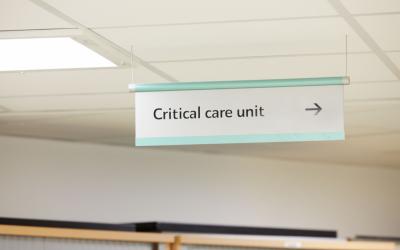The widening gap: inequalities in health and how to fix them

In 2023, it is a startling fact that if you live in Middlesborough you are, on average, at higher risk of having poor health and dying at a younger age than someone from Kensington and Chelsea. Sarah Harrop explores health inequalities in England and what is being done to address the problem.
The conditions in which we are born, grow, live, work and age can often affect our health and wellbeing. In the field of public health, these are known as the ‘wider determinants of health’. It is an unfortunate fact that where you live, your ethnic background and how much money you have can have a strong influence on your health and life expectancy.
These so-called health inequalities are the unfair and avoidable differences in health across the population, and between different groups within society. While they’re ultimately about differences in the status of our health, the term health inequalities can also mean the differences between the care that people receive, the level of access to care that they have, the quality and experience of the care, and the opportunities that people have to lead healthy lives.
Health inequalities in England
Analysis and research by the Health Foundation reveals stark facts about health inequalities. For example, on average, a 60-year-old woman in the most deprived area of England has diagnosed illness equivalent to a woman aged 76 in the wealthiest area. She will spend more than half (43.6 years) of her life living with ill health compared with 41 years for a woman living in England’s most well-heeled area.
People living in low income areas can also expect, on average, to have higher prevalence of multiple diseases diagnosed at once (known as multimorbidity). The biggest health disparities between the richest and the poorest in terms of the amount of disease (disease burden) are concentrated to a handful of diseases. These include chronic pain, diabetes, Chronic Obstructive Pulmonary Disease (COPD), anxiety and depression, alcohol problems and cardiovascular disease.
What is more, these inequalities in health start in youth, with higher rates of diagnosed mental health conditions, chronic pain and alcohol problems starting to develop as early as the late teens and early twenties. These health inequalities then continue to grow and change across the life cycle, through working age and into old age.
Your ethnic background also has an influence on your health. Even after accounting for the different age distributions across ethnicities, there are higher levels of diagnosed poor health among minority ethnic backgrounds than for people from White ethnic groups.
And there’s also a north-south health divide: people living in the North of England have the highest health care needs once adjusted for age, while those in the East of England have the lowest levels of illness. Living in a deprived area of the North East is worse for your health than living in a similarly deprived area in London, to the extent that life expectancy is nearly five years less.
In general, life expectancy in England follows the ‘social gradient’ meaning that the more deprived an area is, the shorter people’s life expectancy will be. In recent years, this gradient has become steeper; for example, among women in the most deprived 10 per cent of areas, life expectancy actually fell between 2010-12 and 2016-18.
Inequalities in people’s care
Wider determinants of health are often interlinked. For example, someone who is unemployed may often live in poorer quality housing. They might have less access to green spaces to get fresh air and exercise and with a more limited budget to spend on food they might have less access to fresh, healthy food. As a result of these interconnected reasons, some groups of people and communities are more likely to have poorer mental and physical health outcomes than the general population.
These worse off population groups are also more likely to find it harder to get access to healthcare, because of :
- lower availability of services in their local area
- inconvenient service opening hours
- lack of access to transport to get to providers of healthcare because of affordability or because public transport is limited
- less access to childcare
- spoken and written language barriers (e.g. poor literacy, or if English is not their first language)
- bad past experiences of healthcare
- misinformation (such as ‘anti-vax’ messages on social media causing fear of vaccination)
- fear of healthcare services.
According to NHS England, those people most at risk of healthcare inequalities are people living in areas of high deprivation, those from Black, Asian and minority ethnic communities and those from other marginalised socio economic groups, for example the homeless.
Effects of the COVID-19 pandemic
The COVID-19 pandemic has further exposed some of the health and wider socioeconomic inequalities that persist in the United Kingdom.
Rates of deaths from COVID-19 were higher in more deprived areas than in less deprived areas. Up to March 2022, the COVID-19 mortality rate was 2.6 times higher for the most deprived segment of the population in England than for the least deprived. As a result, the gap in life expectancy between richest and poorest is widening, with gaps in 2021 of 8.6 years for women and 10.4 years for men.
Ethnic minority groups were again hit harder by the pandemic than White British people, with overall higher mortality rates and more people dying from COVID-19 in the Bangladeshi, Pakistani and Black Caribbean groups. Disabled people experienced a greater risk of dying from COVID-19 than non-disabled people, too. Up to March 2022, risk of dying from COVID-19 was 1.6 times higher for disabled women who consider their daily life to be ‘limited a lot’ compared with non-disabled women and was 1.4 times greater for disabled men who consider themselves ‘limited a lot’ compared to men without a disability.
The Health Foundation believes that the longer-term impact of the pandemic is likely to widen health and social inequalities even further unless urgent and significant action is taken.
What can be done?
“Since 2010, life expectancy in England has stalled; this has not happened since at least 1900. If health has stopped improving it is a sign that society has stopped improving. When a society is flourishing, health tends to flourish.”
So says the 10-year follow up report to the landmark Marmot Review, ‘Fair Society, Healthy Lives’ published in 2010. This was an independent review into health inequalities in England led by Professor Sir Michael Marmot, a world-renowned expert on the social determinants of health and on health inequalities. The big picture ten years on shows that the health gap between the richest and poorest areas has worsened and that urgent action is needed.
“Inequalities in poor health harm individuals, families, communities and are expensive to the public purse. They are also unnecessary and can be reduced with the right policies,” the report’s authors say.
So what are those policies? The review recommends:
- Development of a national strategy for action on the social determinants of health, aiming to reduce inequalities in health.
- Ensuring resources and the implementation of policies are universal, but proportionate. That means developing interventions to be applied everywhere across the country but which are developed to be more intense where the need is higher (such as in the North East of England), raising overall levels of health and flattening the ‘social gradient’.
- Intervening as early as possible. Every child should be given the best start in life, and young people and adults should be helped to maximise their capabilities. There should be a healthy standard of living for everyone, as well as fair employment and good work for all, the report recommends. Also, sustainable places and communities should be developed and more money spent on public health.
- Developing a social determinants of health workforce. Action on the social determinants of health needs action and know-how across many areas as well as health, from education programmes to anchor institutions and local and national partnerships.
- Engaging the public with health inequalities. The public and political debate on health needs to move towards the social determinants and away from the current focus on individual behaviours and health care; this will help shift political focus and encourage investment and action on social determinants.
- Developing ways to monitor the whole system and accountability for health inequalities. Monitoring is essential for progress and National Government needs to be accountable for health inequalities, and for the range of policies outside the health care sector that are needed to address the problem.
NHS England is stepping up to address the challenge. It has developed the ‘Core20plus5’ approach to health inequalities and now has five key priority areas which underpin the National Healthcare Inequalities Improvement Programme. These are: to restore post-pandemic NHS services inclusively; prevent digital exclusion; ensure that ethnicity datasets are complete and timely; accelerate preventative programmes that engage groups of people with the greatest risk factors for ill health; and to strengthen leadership and accountability.
The hope is that implementation of these measures will start to narrow the unfair and unnecessary gaps in health that exist in our society.
Shaping the healthcare sector of tomorrow
Ready to lead change to help bring about improvements to the healthcare systems of the future, tackling everything from cardiovascular disease to public health and sustainability to health inequalities? The MSc Healthcare Management programme at Queen Margaret University prepares its students for work in the field of healthcare management in the UK and beyond. Led by the Queen Margaret Business School (QMBS) and taught by the diverse and experienced staff within the School of Health Sciences and QMBS at QMU, this master’s degree is taught by experts in both management and health. You’ll gain critical analytical skills and some practical skills as well as the theoretical knowledge needed for professional practice within healthcare management, both public and private sector. What is more, the course is 100% online so you can study from anywhere and fit it around your life. Find out more

















The information below is required for social login
Login to your Account